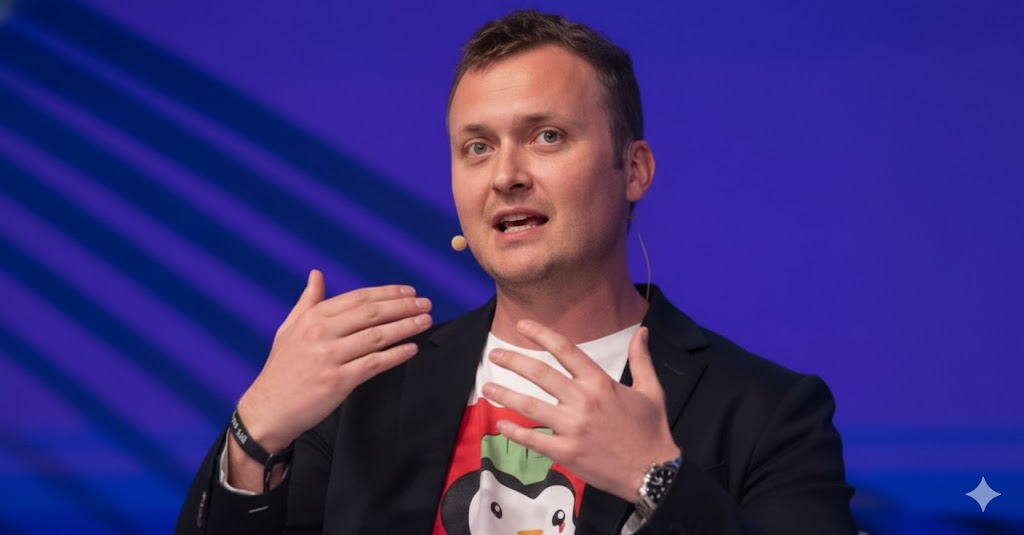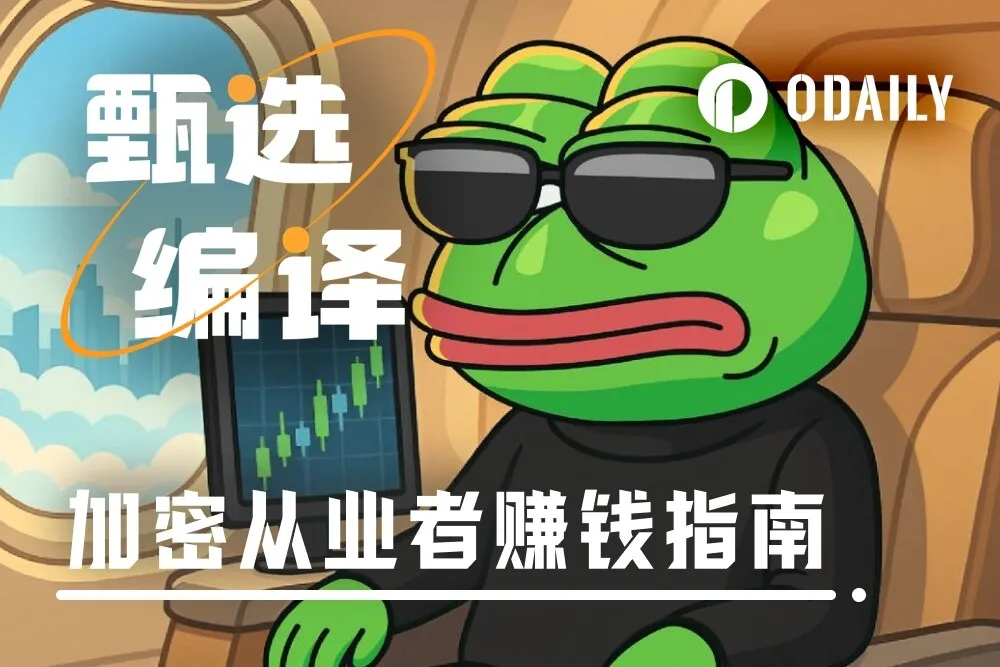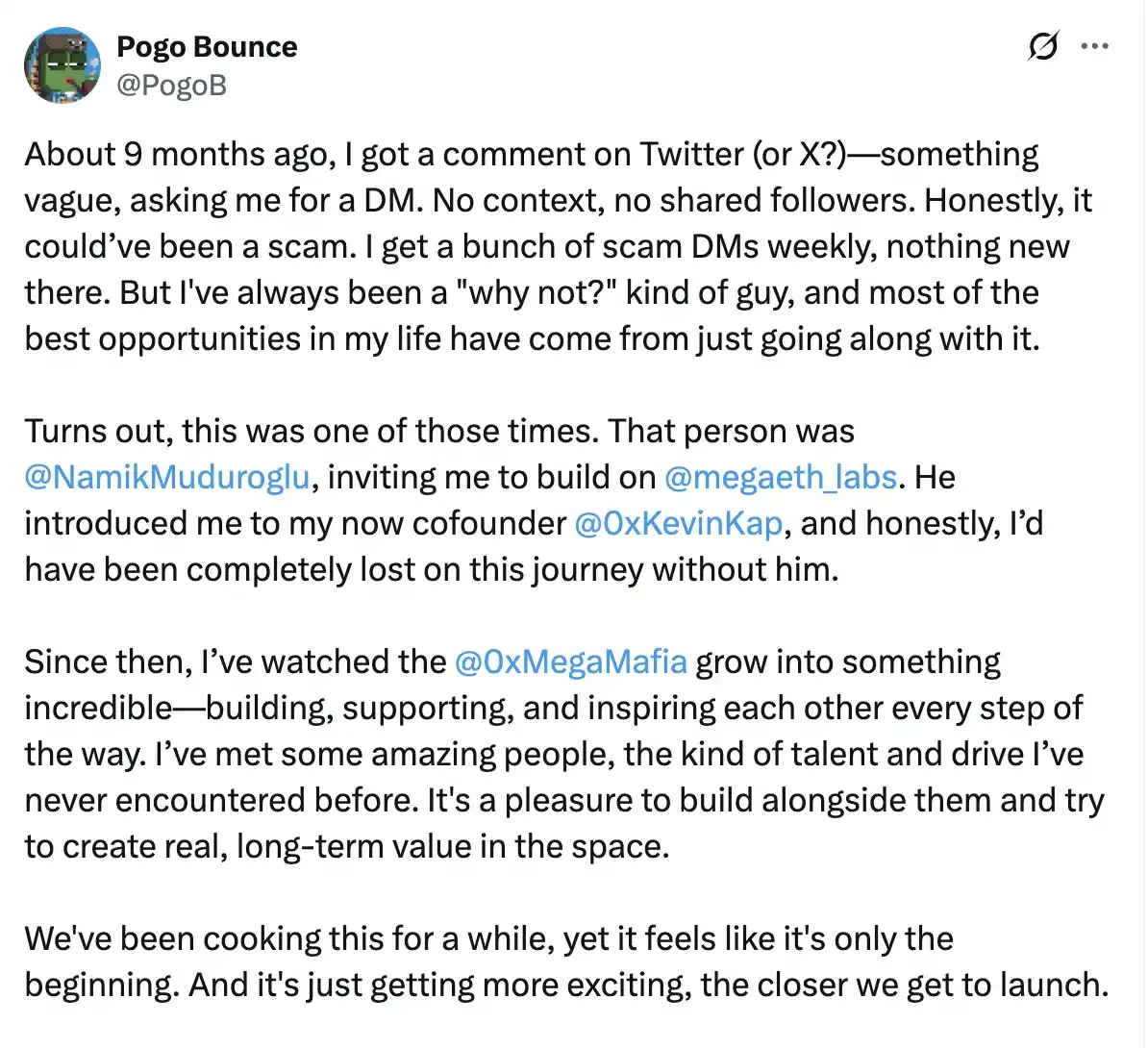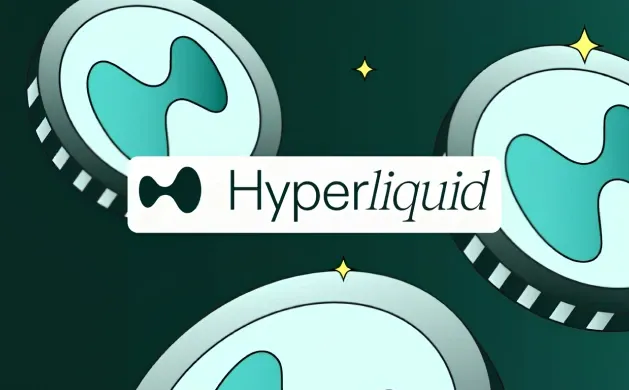Recognizing Innovation, Cloning, and Industrialization Stages.
Author: The Rollup
Translated by: Baihua Blockchain

In this in-depth interview, we invited Alex Vanovic, co-founder and CEO of Nansen, to explore the future of on-chain analysis, the disruptive power of AI agents, and the grand vision of the crypto world moving towards the "real world era."
Alex will exclusively reveal how the Nansen mobile app transforms complex on-chain data into an intuitive "agent experience" through innovative AI agents, allowing users to track the movements of "smart money" as if conversing with an expert, and preview the upcoming trading execution feature.
Additionally, as one of the largest validators of Hyperliquid, he will analyze the three-stage model of crypto narratives from "innovation" to "industrialization excess," boldly predicting how the on-chain integration of stablecoins and RWAs (real-world assets) will frame the current crypto market as the "toy world era," and share his unique insights on over-financialization and Balaji's concept of "network states." Get ready to stand at the forefront of data science and see the future landscape of crypto clearly.
1. Nansen Mobile App and AI Agents
Host: Alright, let's talk. The Nansen mobile app is now live in the app store! Can you introduce why it is called the best "agent experience" in the crypto space? What can it do for users?
Alex Vanovic: That's right! One major issue we faced in the past was that users found the product difficult to use and didn't know which dashboard or metric to look at. So we thought, why not envision what investing will look like in 2030 and start implementing it now? For many software products, traditional user interfaces may be fading away; in the future, you might just need to converse with an AI agent.
After downloading the app, besides tracking your portfolio, the cool part is that you have an AI agent that understands your portfolio and can access all on-chain transaction data. This means you can ask it questions like, "What meme coins did smart money buy on chains like Solana or Base in the last 30 minutes?" It can fetch data in real-time and provide you with answers in seconds.
You can choose between quick mode or expert mode. I can even paste a transaction hash, and it will analyze user behavior for me. This is a whole new way to navigate the blockchain.
Host: That's very intuitive. You can ask various questions about the movements of smart money over different time periods. Ultimately, I think I could just say, "Take care of it for me! You know my risk tolerance and trading preferences, go execute these trades."
Alex Vanovic: I love that you pointed this out because that is exactly our direction! The next step is clearly to allow users to execute trades directly within the app, like launching in November.
I believe that after users operate multiple times through this agent trading experience, they will start to trust it and eventually think, "Why not just give it an overall strategy to execute while I monitor and check?" It's a bit like Tesla's autonomous driving roadmap, building trust over years of use.
Host: I feel like this is akin to "atmospheric trading" or "atmospheric programming." You've internally tested a prototype with trade execution; how does it feel?
Alex Vanovic: It's way more fun than clicking dashboards and looking at price charts! It's smoother and more engaging. AI is great at simplifying complex processes, removing all the troublesome friction, and allowing you to focus on what you want to do.
Now our app can do this: once you input the address you want to track, the homepage will generate personalized preset prompts for you. For example, if your portfolio goes up, the homepage will have a card asking, "Why did Pangu (for example) go up today?" You don't even have to think about what to ask; we've prepared prompts for you.
Host: As someone influenced by emotions, FOMO, etc., it's hard to calmly assess one's trading or investment performance. But with this app, you can ask, "What were my best trades? What mistakes did I make? Are there patterns in my mistakes?" That's incredibly valuable.
Alex Vanovic: I completely agree! With this app, you can clearly see your trading performance, identify error patterns, and analyze calmly. It's not only practical but also makes the whole process more enjoyable and intuitive.
Host: Right? Do you plan to add more memory features in the future? To let the agent understand more information, like why I made a particular trade or what my overall goals are?
Alex Vanovic: Absolutely, we want to add more memory features, similar to the memory files of ChatGPT or Grok, to make the agent more personalized and useful. Users' reasons for trading or overall strategies can be stored, and the agent will become increasingly intelligent, providing more precise assistance.
2. Hyperliquid Validators and the Three Stages of Crypto Narratives
Host: Okay, Alex, I want to switch topics. Nansen is one of the largest validators on Hyperliquid. What is it like to operate such a large-scale validator? What challenges and controversies have you encountered?
Alex Vanovic: Yes, besides the foundation, we are the largest validator on Hyperliquid. We started running validators for Ronin about a year ago, thinking it was interesting to align with the community's interests. We acquired a small startup called Stake With Us, and now we have over $2 billion in staked assets, growing more than 30 times in a year.
We quickly integrated Hyperliquid and decided to operate the validator together with Hyperco. We handle the technology, while Hyperco has deep knowledge of the ecosystem and plays a key role in the governance voting of USDH.
Host: Speaking of that vote, I heard there were some controversies?
Alex Vanovic: Yes, I want to clarify some misunderstandings. Some people think the outcome was predetermined, but at least for us, that was not the case. We carefully examined all proposals, communicated with all bidders, and spent a lot of time analyzing. We have an internal scoring system and encourage more people to submit proposals. In the end, the committee chose to abstain, leaving the decision entirely to the stakers. The results were very close, with Paxos following closely behind.
Host: Now that Native Markets has staked and locked $200,000 of HYPE, a new era has begun. Many stablecoin issuers have indicated they will continue to launch products on Hyperliquid; is this what you hoped to see?
Alex Vanovic: Absolutely! Players like Paxos and Athena are excellent, and you want them all to build within the ecosystem. Besides the token symbol itself, I believe these stablecoins will perform very well.
Host: As one of the largest validators, what do you think the next stage for Hyperliquid will be?
Alex Vanovic: It's hard to say; the Hyperliquid ecosystem is too rich! I believe all narratives or innovations in the crypto industry follow a three-stage process.
Innovation: Hyperliquid is an innovator in full-stack derivatives trading.
Cloning: Variants of similar concepts emerge.
Industrialization Excess: Some find ways to mass-produce these clones.
For example, meme coins: Dogecoin is the innovator, Pepe is the clone, and Pump.fun is the factory that produced 84 million meme coins.
Interestingly, Hyperliquid has a project called Based, which has created a WordPress-like platform that allows users to deploy their own front-end interfaces while the back end remains Hyperliquid. This model is clever; industrialization excess could mean a bunch of Hyperliquid front-ends, which would be good for Hyperliquid.
Host: You mentioned this; I wonder who will be the winner? Will Hyperliquid continue to lead?
Alex Vanovic: That's a key question. Innovators can indeed be surpassed, but Hyperliquid's unique advantage lies in its technology and community. If industrialization excess results in a bunch of front-ends based on Hyperliquid, it will still be the core infrastructure and hard to completely replace. However, competition will be fierce, and the future will be interesting.
Host: This reminds me that Tether was the innovator of stablecoins, then came clones like USDC, and now we are in the industrialization phase. Do you think stablecoins or other categories have already overextended, or are there areas that are still in their early stages?
Alex Vanovic: Stablecoins themselves are still early; they have a clear product-market fit. I believe we might see trillions, even tens of trillions of dollars in stablecoins minted in the coming years.
The example of Paxos is interesting; they made white-label stablecoins like BN USD until they were halted by Gary Gensler (SEC Chairman). They actually "lost" a lot of texts and emails, which is outrageous. A multi-billion dollar business was destroyed overnight; really, someone should seriously investigate this.
3. On-Chain Real World Assets and Over-Financialization
Host: Regarding the impact of stablecoins on the on-chain economy, do you think we can broaden the perspective a bit?
Alex Vanovic: Stablecoins are an example of traditional financial assets going on-chain, but the dollar is not the only asset that should go on-chain. In the coming years, securities, stocks, real estate, etc., will all go on-chain, which will make the scale of the crypto market look small in comparison. The current crypto market is still quite small.
I mentioned before that by 2040 or 2050, when looking back at crypto history, the current stage will be referred to as the "toy world era." We have created many speculative, experimental tokens.
But the upcoming "real world era" will bring 10,000x, 100,000x value on-chain. For example, why can't Nansen's equity go on-chain? If young people could buy just 1% of a property share and gradually accumulate, it would change the game. The mechanisms of blockchain make asset collateralization simpler.
Host: You mentioned that the borrowing market and Aave would be major beneficiaries of more value going on-chain, which is interesting.
Alex Vanovic: Yes, if you have Google stock or real estate, you would want to use them as collateral for borrowing, which is very convenient. The core of blockchain mechanisms is to enable asset collateralization, making borrowing more efficient. I believe Layer 1 assets, some Layer 2 assets, and protocols like Aave that will clearly benefit from value going on-chain are good investments.
Host: As we put more assets on-chain, I want to ask a question about the over-financialization of the world. What are your thoughts on over-financialization?
Alex Vanovic: I lean more towards Milton Friedman's view: if people own something, they will take better care of it. I believe that allowing people to own assets is beneficial for the world. We should strive to create a world where billions of people can be owners in some way, rather than the World Economic Forum's narrative of "you will own nothing and be happy."
Collateralization is interesting because it could lead to a differentiation between hard assets and soft assets. You can hold hard assets like Bitcoin and Ethereum in DeFi "banks" and collateralize them for borrowing when you need to consume. Currently, these products are mainly targeted at the wealthy through wealth management services, but DeFi makes it accessible to everyone. This is exciting.
4. The Concept of Network States
Host: You mentioned the ownership of networks or assets, which is central to Balaji's concept of network states. I know you visited his network school at the border; can you share your experiences there?
Alex Vanovic: It was a fantastic experience. I attended a founder-to-founder event. The network school is still in its early stages, but I am very optimistic about what Balaji is building. I love its futuristic feel; it feels like everyone is collaboratively building the future. Being with other builders creates an atmosphere where anything seems possible.
Host: What do you find most appealing about the concept of network states?
Alex Vanovic: I grew up in Norway, and after moving abroad, I felt a stronger connection through the crypto community. In a sense, this is my primary community, and I have a sense of belonging. But crypto is not a country, and it's hard to feel patriotic about it. Balaji is trying to turn that sense of belonging into something more concrete, and I think many people resonate with that.
Maybe in a few years, we will all have network state passports! Following him feels like a curiosity to see what his vision will ultimately become. His vision aligns very well with our current era.
Host: Alex, thank you for joining the show! You have a holistic perspective on the industry, connecting the dots, and your insights are incredibly valuable.
Alex Vanovic: Thank you for having me! I'm glad to be here.
Article link: https://www.hellobtc.com/kp/du/10/6086.html
Source: https://www.youtube.com/watch?v=VwvllrkabRw
免责声明:本文章仅代表作者个人观点,不代表本平台的立场和观点。本文章仅供信息分享,不构成对任何人的任何投资建议。用户与作者之间的任何争议,与本平台无关。如网页中刊载的文章或图片涉及侵权,请提供相关的权利证明和身份证明发送邮件到support@aicoin.com,本平台相关工作人员将会进行核查。




